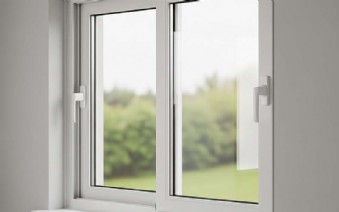-

Company
Product
ALUMINIUM MACHINES
PORTABLE MITER SAWS FOR ALUMINUM
PORTABLE COPY ROUTER MACHINES FOR ALUMINIUM
PORTABLE END MILLING MACHINES FOR ALUMINIUM
AUTOMATIC MITER SAWS FOR ALUMINIUM
COPY ROUTER MACHINES FOR ALUMINIUM
END MILLING MACHINES FOR ALUMINIUM
ALUMINUM CORNER CRIMPING MACHINE
DOUBLE MITRE SAWS FOR ALUMINIUM
AUTOMATIC SAWS FOR ALUMINIUM
BAR PROCESSING CENTERS
MACHINING CENTERS FOR ALUMINIUM COMPOSITE PANELS
NOTCHING SAWS
WEDGE CUTTING SAWS AND NOTCH CUTTING SAWS
MITER SAWS FOR ALUMINIUM
PVC PLASTIC MACHINES
PORTABLE MITER SAWS FOR PLASTIC
PORTABLE COPY ROUTER MACHINES FOR PLASTIC
PORTABLE END MILLING MACHINES FOR PLASTIC
MITER SAWS FOR PLASTIC
COPY ROUTERS FOR PLASTIC
END MILLING MACHINES FOR PLASTIC
WELDING MACHINES FOR PLASTIC
CORNER CLEANING MACHINES FOR PLASTIC PROFILES
DOUBLE MITRE SAWS FOR PLASTIC
BAR PROCESSING CENTERS
GLAZING BEAD SAWS
AUTOMATIC MITRE SAWS FOR PLASTIC
METAL MACHINES
MANUAL METAL SHEET BENDING MACHINE
MANUAL BENDING MACHINES
HYDRAULIC BENDING MACHINES
NON MANDREL BENDERS
PLATE BENDING MACHINES
BORDERING AND TRIMMING MACHINES
HORIZONTAL PRESSES
BELT GRINDING MACHINES
PIPE NOTCHING MACHINES
PIPE POLISHING MACHINES
LASER CUTTING MACHINES
PRESS BRAKES
VERTICAL TURNING CENTERS
MACHINING CENTERS
WOOD MACHINES
GLASS MACHINES
ROBOTICS SPECIAL MACHINERY
Service
Blog
Contact
Blog
SLIDING WINDOW

Sliding Windows – Modern Solutions for Light, Space and Comfort
Introduction
Sliding windows have become one of the most popular window types in modern architecture. They provide generous openings, maximise daylight, and offer outstanding functionality. With their horizontally or vertically sliding sashes, they are ideal for apartments, houses, conservatories, offices, and public buildings. Sliding windows combine design, comfort, and energy efficiency, making them an attractive alternative to traditional tilt-and-turn or casement windows.
What are sliding windows?
A sliding window is a window system where the sashes move horizontally or vertically along tracks instead of swinging inward or outward. This design saves space and offers flexible solutions for modern living.
Types of sliding windows include:
-
Horizontal sliding windows – sashes slide sideways past each other.
-
Vertical sliding windows – common in the UK and USA, where sashes move up and down.
-
Parallel sliding windows – sashes slide sideways similar to sliding doors.
-
Tilt-and-slide windows – combining tilt function with sliding operation.
Advantages of sliding windows
-
Space-saving: No sash opening into the room, perfect for small spaces, balconies, or kitchens with counters in front of the window.
-
Large glazing surfaces: Slim profiles allow expansive glass areas, maximising natural light and creating a bright, open atmosphere.
-
Ease of use: Modern hardware and track systems make even heavy sashes easy to operate.
-
Design variety: Available in uPVC, wood, aluminium, or hybrid wood-aluminium designs with many colour and surface options.
-
Energy efficiency: Modern glazing and thermally broken frames achieve excellent insulation values.
-
Accessibility: Can be installed with low thresholds, ideal for barrier-free construction.
-
Security and soundproofing: With the right glazing and hardware, sliding windows offer high burglary resistance and effective noise protection.
Disadvantages
-
Higher initial costs compared to standard casement windows.
-
Regular cleaning of the tracks is required to prevent dust and dirt buildup.
-
The maximum opening size may be smaller than with outward-opening windows.
Materials for sliding windows
-
uPVC sliding windows: Affordable, low-maintenance, and energy-efficient, ideal for apartments.
-
Wooden sliding windows: Natural look and excellent insulation, but more expensive and maintenance-intensive.
-
Aluminium sliding windows: Extremely durable and modern, suitable for large glass surfaces.
-
Wood-aluminium sliding windows: Premium solution combining natural wood indoors with aluminium protection outdoors.
Applications
Sliding windows are versatile and commonly used in:
-
Residential buildings, especially apartments and city homes.
-
Family houses with conservatories, balconies, or terraces.
-
Office buildings, providing elegant facades with large glass areas.
-
Public buildings requiring durable, accessible window systems.
-
Modern architecture emphasising panoramic views.
Technical features
Modern sliding windows include:
-
Multi-layer glazing for thermal and acoustic insulation
-
Thermally broken frames for energy efficiency
-
High-security hardware and locking systems
-
Soft-close mechanisms for smooth operation
-
Smart-home integration for automated ventilation and shading
Sustainability and future trends
Sliding windows are increasingly produced with sustainable materials and eco-friendly manufacturing processes. Innovations include:
-
use of recycled PVC,
-
FSC-certified wood,
-
aluminium with high recycled content,
-
advanced sealing systems to reduce energy loss.
Future sliding windows will integrate more smart technologies, such as automated ventilation and self-cleaning glass, further enhancing comfort and energy efficiency.
Conclusion
Sliding windows are a modern, functional, and elegant solution. They save space, allow expansive glazing, and adapt to a variety of design styles. Although more expensive than basic window types, their long-term benefits in comfort, energy efficiency, and aesthetics make them a worthwhile investment. Whether in new construction, renovations, or contemporary architecture, sliding windows represent design, functionality, and sustainability for the future.
- sliding windows
- buy sliding windows
- sliding window prices
- uPVC sliding windows
- wood sliding windows
- aluminium sliding windows
- advantages sliding windows
- disadvantages sliding windows
- modern sliding windows
- sliding window manufacturers
- sliding window design
- sliding window installation
- sliding window renovation
- energy efficient sliding windows
- large sliding windows
 GERMANY
GERMANY ENGLISH
ENGLISH FRANCE
FRANCE SPAIN
SPAIN PORTUGAL
PORTUGAL








